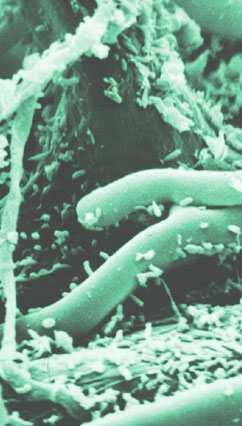Locals grow new tree of life
 Australian scientists are developing a new evolutionary tree for bacteria based on DNA.
Australian scientists are developing a new evolutionary tree for bacteria based on DNA.
A team of University of Queensland researchers have created the new bacterial classification system using genome sequences.
The technique - called ‘metagenomics’ - uses bacterial genomes are obtained straight from environmental samples to create a more complete picture of the structure of the bacterial kingdom.
It is the latest attempt to improve our system of taxonomy - scientific or Latin names – so that it remains useful as we learn more and more about species and the differences between them.
“Taxonomy helps us classify living things by arranging them in a hierarchy from closely to distantly related organisms according to ranks, such as species, genus, family, order, class, phylum and domain,” said lead researcher Professor Phillip Hugenholtz.
“It’s a system that helps us understand how organisms are related to each other.”
Professor Hugenholtz said the scientific community generally agrees that evolutionary relationships are the most natural way to classify organisms, but bacterial taxonomy is riddled with errors, due to historical difficulties.
“This is mainly because microbial species have very few distinctive physical features, meaning that there are thousands of historically misclassified species,” he said.
“It’s also compounded by the fact that we can’t yet grow the great majority of microorganisms in the laboratory, so have been unaware of them until quite recently.”
But recent advancements in genome sequencing technology are helping reconstruct the bacterial tree of life.
“We can now get the entire genetic blueprints of hundreds of thousands of bacteria, including bacteria that have not yet been grown in the lab,” said Dr Donovan Parks, the lead software developer on the project.
The team has constructed a giant evolutionary tree of bacteria based on 120 genes that are highly conserved across the bacterial domain.
“This tree helped us create a standardised model, where we fixed all of the misclassifications and made the evolutionary timelines between bacterial groups consistent,” Dr Parks said.
“For example, the genus Clostridium has been a dumping ground for rod-shaped bacteria that produce spores inside their cells, so we reclassified this group into 121 separate genus groups across 29 different families.
“We’ve given bacterial classification a complete makeover, and we’re delighted that the scientific community is just as excited about this as we are.”
The new tree has been added to the Genome Taxonomy Database.








 Print
Print